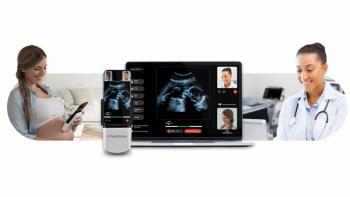
Echo society issues rules for carotid ultrasound
Stenosis of 75% or greater indicates aggressive treatment in consensus statement for clinical pratice
The American Society of Echocardiography has issued a new consensus statement to aid physicians in interpreting and responding to results of carotid artery ultrasound. The guidelines set stenosis degree of 75% or greater as the threshold for aggressive treatment.
Carotid ultrasound has been used as a research tool for more than two decades and is increasingly turning into an established clinical practice. The ASE consensus statement provides standards for patient selection, scanning protocol, and interpretation to guide doctors on proper patient selection and management decisions. It provides specific guidance for detecting early atherosclerotic plaques and increased carotid intima-media thickness (CIMT). The document, however, recommends skipping imaging unless the results would be expected to alter therapy.
These guidelines will help physicians feel more confident recommending aggressive preventive therapies if ultrasound reveals the walls of the carotid arteries are thicker than cutoff points established for patients of similar age, sex, and race. They also provide recommendations for training and certification of sonographers and sonologists.
The document sets 75% stenosis as the threshold at which aggressive treatment should be undertaken. Those who have CIMT greater than that level established for patients of similar age, sex, and race are considered to be at increased cardiovascular risk.
There is a great interest in identifying patients who don’t have symptoms of heart and blood vessel disease but who are at higher risk than they may appear. Having a safe, noninvasive approach for diagnosing early arterial disease and revealing potential heart disease will give doctors and patients the information they need to select the best treatment options, said Dr. James H. Stein, a cardiologist at the University of Wisconsin School of Medicine and Public Health.
Patients who may benefit from this test include those who:
Σ are clinically determined to be at intermediate risk for a heart attack or cardiac death in the next 10 years;
Σ have a family history of premature cardiovascular disease in a close relative;
Σ have significant abnormalities in one or more known cardiovascular risk factors, such as young patients with genetic cholesterol disorders or heavy smokers; or
Σ are female and under 60 with at least two cardiovascular risk factors.
Despite carotid ultrasound’s proven value, the ASE is not recommending routine use of the procedure for all patients. The guidelines are designed to help physicians narrow their patient selection criteria to include those who will benefit most, said Stein, who is also the lead author of the ASE consensus statement.
“Carotid ultrasound to measure wall thickness and look for early plaques is most useful when other clinical information puts patients on the borderline between needing aggressive therapy and following a more standard approach,” he said.
The consensus panel recommended a comprehensive scan of all segments of both carotid arteries to look for the presence of plaques, as well as imaging of the far walls of each common carotid artery so CIMT can be measured. The presence of carotid plaque or increased CIMT is a marker of increased risk of heart attack, stroke, or death from cardiovascular disease.
The consensus statement was also endorsed by the Society for Vascular Medicine. The full document is available at the ASE-sponsored website at www.seemyheart.org
Newsletter
Stay at the forefront of radiology with the Diagnostic Imaging newsletter, delivering the latest news, clinical insights, and imaging advancements for today’s radiologists.




























